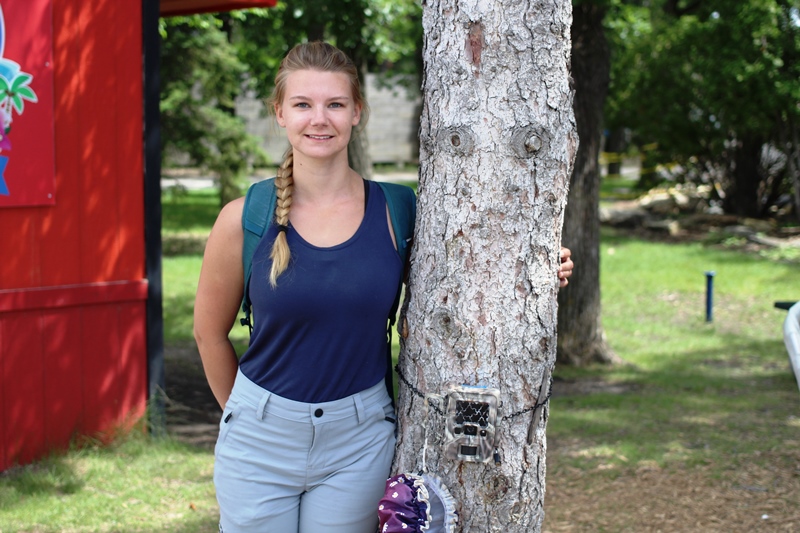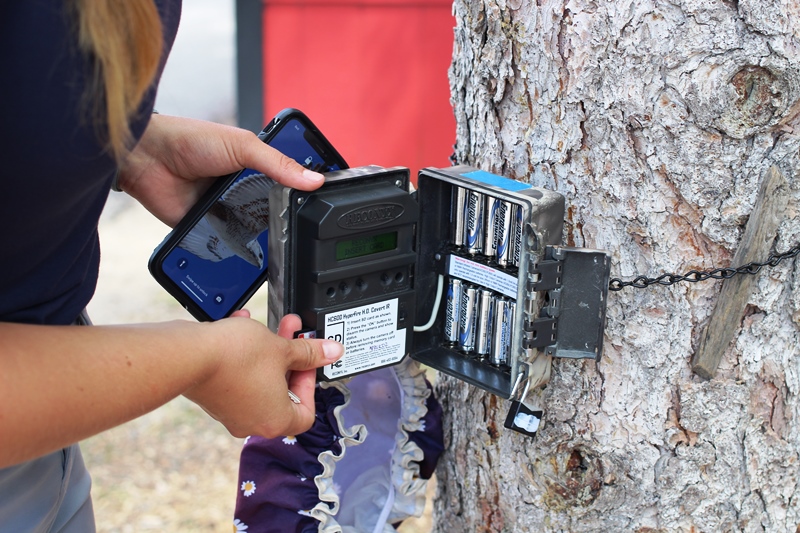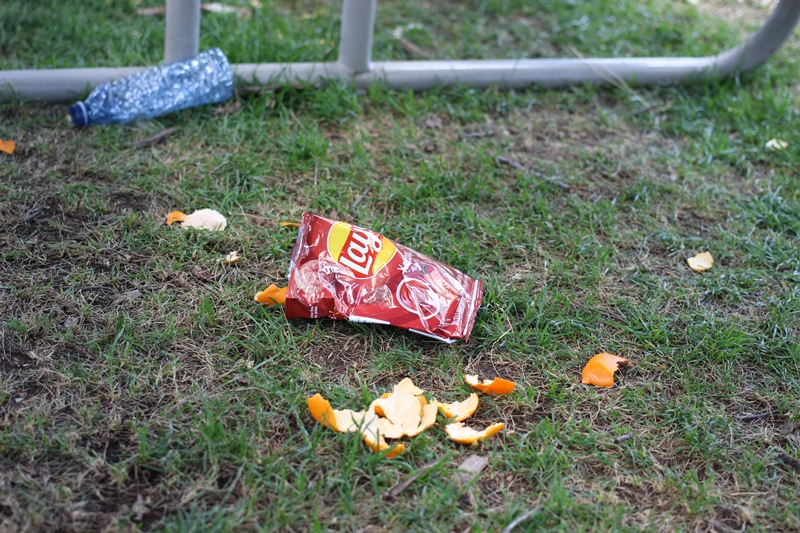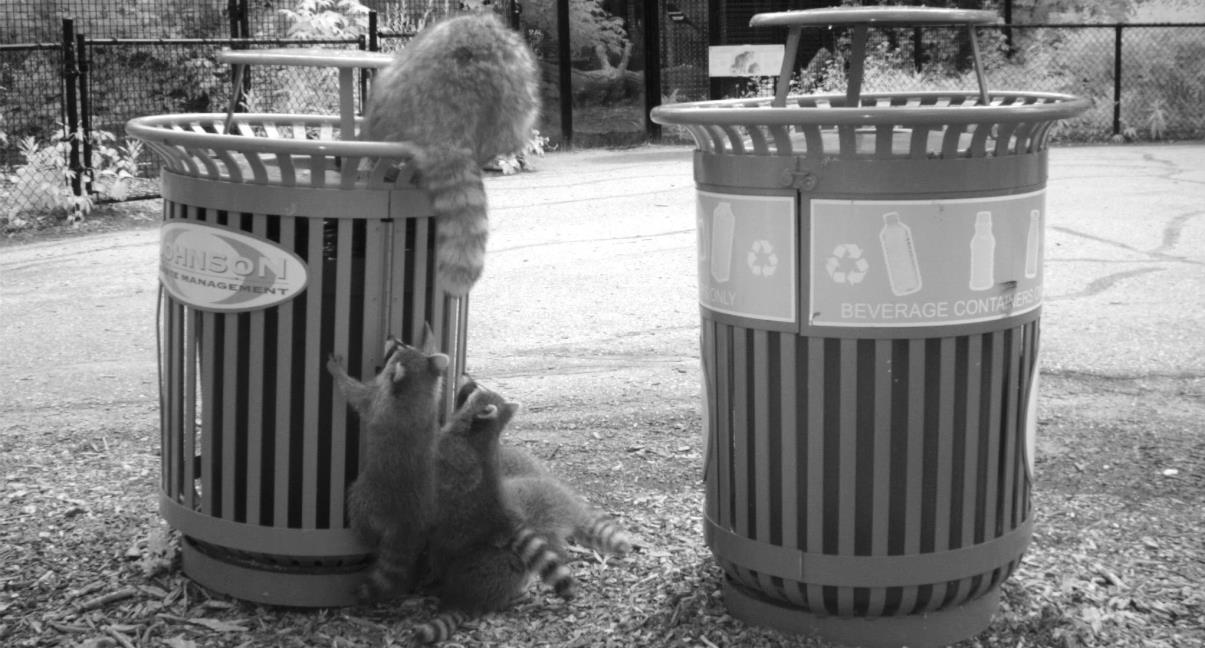A conversation with Lynnae Martin, a master's student at the University of Manitoba with the Natural Resource Institute, who is completing her research project at the Assiniboine Park Zoo.
What are you doing at the Zoo?
Lynnae: I am looking at how urban wildlife interacts with human-produced waste within the Zoo. I do this by observing 15 sites around the Zoo using six motion-sensing trail cameras that are rotated between the sites. In addition, I come to the Zoo in person during the day to do observations of the animals interacting with waste bins, litter, and picnic areas. The stationed cameras are uncovered when the Zoo closes and recovered, with shower caps, by Zoo volunteers when the Zoo opens the next day.
Lynnae with a camera set up in the Zoo
Photos captured by the camera at night are downloaded and studied
What is the goal of the project?
L: I want to examine how human-produced waste is influencing wildlife, specifically the changes in behaviour they are exhibiting by having access to this resource.
Right now, we are teaching wildlife that wherever there are humans, wherever there is garbage, there is food. This can result in human and wildlife conflicts, animals eating materials that are potentially harmful to them, and changes in animal behaviour.
My goal is that by demonstrating how our garbage is influencing wildlife, I can increase awareness and encourage people to make simple changes in their lives related to waste.
Waste left behind can attract wildlife
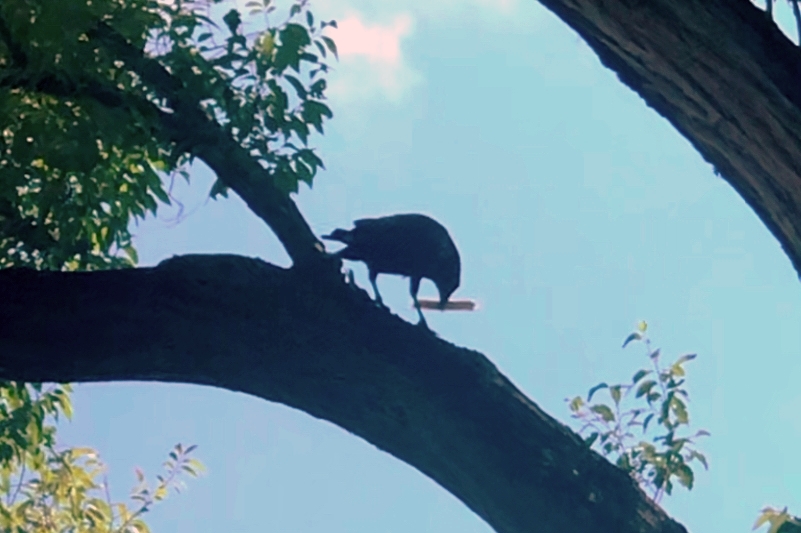
Crows learn how our food is packaged and how to access it
What animal behaviours have you noticed due to the presence of waste?
L: Within the Zoo, I have noticed that squirrels are spending a lot of time within the waste bins. The squirrels get very territorial of the garbage bins - they become a little feisty. Raccoons and squirrels easily access the bins, unlike the birds. I have noticed instances where birds will wait for the squirrel or raccoon to pull out the food from the bins and then go in to scavenge. Crows will watch the picnic tables and wait for families to leave then pick up what they left behind.
The other day I saw a crow trying to open a cheese string, they know that there is food in there. They are learning how our food is packaged and how to access it.
What have you seen in photos captured in the Zoo at night?
L: Lots of raccoons! The squirrels tend to be daytime scavengers and the raccoons come out at night. There is a family of raccoons living in the Zoo and the mom has taught the babies to crawl into the waste bins.
A photo captured by the camera of a mother raccoon scavenging for food with her litter
What advice could you offer to our Zoo visitors about managing their waste?
L: If you are bringing snacks from home, I would say bring reusable containers! This significantly reduces the amount of waste we produce. If you are throwing containers away make sure they are completely empty of food and liquids, and that you are throwing them away in the right bin. Throwing food waste into the recycling bin contaminates the bin and attracts animals. If we can get better at lowering the amount of organic material or contamination rates in recycling bins, it will keep animals out of these bins.
Also, we can all educate ourselves on what is recyclable within Manitoba and maybe start composting at home. This diverts a lot of waste from ending up in the landfill.
Assiniboine Park Conservancy is funding this project to help wildlife, create a more sustainable Zoo, and improve our visitor experience. The Zoo’s sustainability specialist, Renata Machado, is working with Lynnae to understand how wildlife interacts with our waste bins, and how we can engage with our visitors on the impact of their produced waste.
Reducing and diverting the amount of waste that goes into the landfill, or to our furry and feathered friends, is something we can all do. We want to encourage you to pack reusable containers, remember to make sure recyclables are empty, and compost when possible while at home and at the Zoo.


